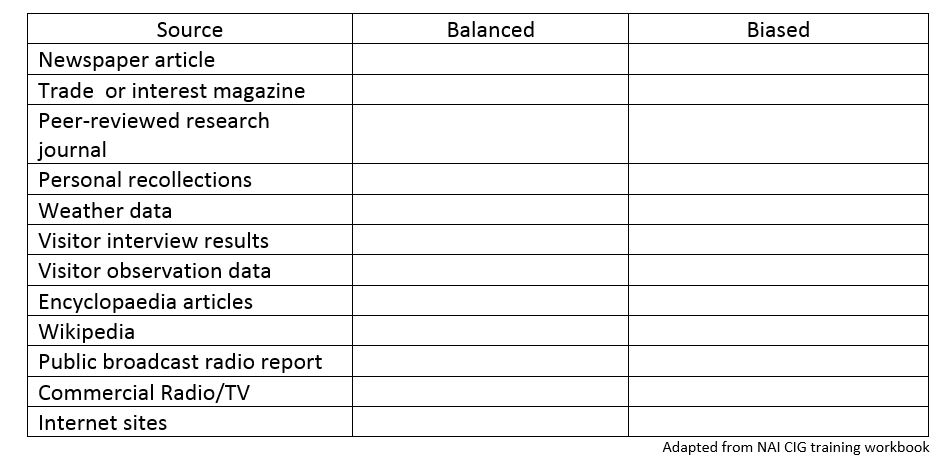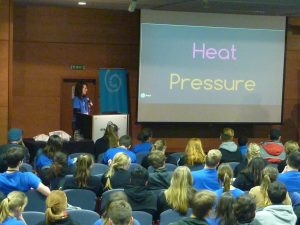No-one expects you to be an expert on your topic and there is only so much you can cover in a 10 minute presentation. However, you should research your topic thoroughly. A good research plan will help ensure accuracy, establish credibility and achieve your objective of enhancing understanding. When you have decided on the key areas of your topic you want to focus on divide up the research duties amongst your team.
Your key research areas will come out of Step 2 of your Topic to Theme Recipe.
i.e.
Step 1. Select a general topic
“Generally my presentation is about………………
Step 2. State your topic in more specific terms
“Specifically, however, I want to tell my audience about………………”
Step 3. Now, express your theme.
“After my presentation, I want my audience to understand that……………”
Remember to complete each line as one complete sentence. This will help focus your research on the key aspects of your topic that are relevant.
(From Sam H. Ham, 1992)
Beware of Bias!
Good research materials should be objective, presenting a balanced view of the topic. If you deliver biased information, your credibility with the audience will suffer.
As you embark on your research take a minute to reflect on the following sources and their potential for bias.
 You may find this link designed for first year Otago University students useful also
You may find this link designed for first year Otago University students useful also
Evaluating Information Sources: http://oil.otago.ac.nz/oil/module7.html
Credit Where Credit is Due
If you use someone else’s ideas, words or pictures in your presentation, you should acknowledge the original source if known. You can do this by:
- Attributing the source as you speak (As Marie Curie once said “Nothing in life is to be feared, it is only to be understood. Now is the time to understand more, so that we may fear less.”)
- Indicating the source after a direct quote , graphic, image on Powerpoint slide
- Showing a list of source material after the final slide of your show as part of your conclusion/thank-you
Failure to give credit where credit is due may damage your own credibility and violate copyright law.
What’s Hot and What’s Not.
As you do your research, remember:
People love to hear:
- Good stories
- Inspirational thoughts and quotes
- Unusual facts (Catfish have over 100,000 taste buds over the surface of their body)
- Facts involving huge numbers in terms they can understand..
(Each nerve cell or neuron is about 10 microns wide. If you were able to line up all 100 billion neurons in your brain in a straight line that line would be about 1000 km long. That’s like from Dunedin to Auckland!)(Adapted from `Neuroscience for kids’ by Eric H. Chudler)
- Things that evoke emotional or physiological responses (scary things, beautiful things, amazing things, happy things) – the `intangibles’ around the `thing’ you are talking about.
- Things that are important to them
They don’t really care much about….
- Ordinary scientific data (Around 1.5 billion litres of domestic wastewater is discharged into the environment on a daily basis in New Zealand).
- Being `told what they must do’.
- How much you think you know about your topic.
Good luck with your research and remember we are here to help so don’t hesitate to get in touch if need clarification and/or help with anything.






Recent Comments